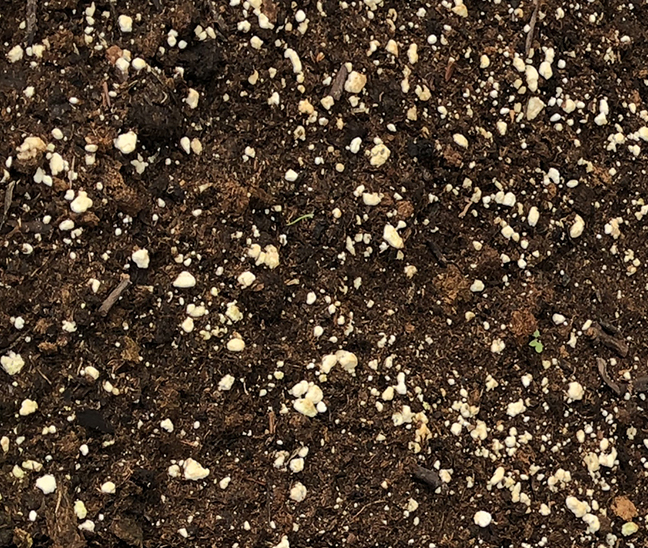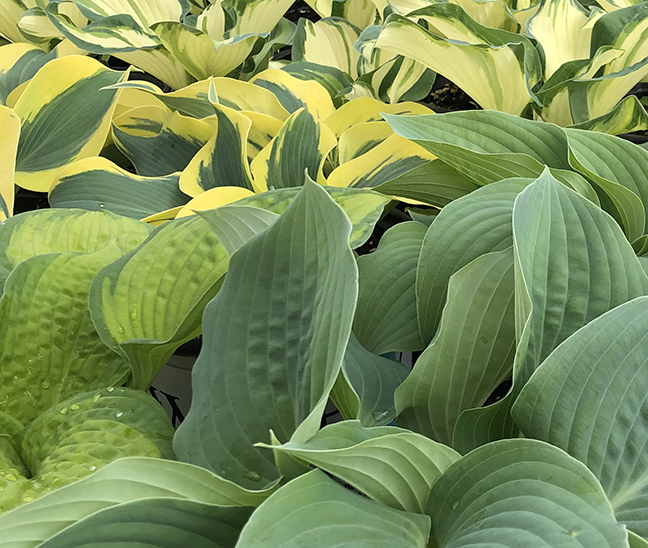Why use natural insect control?
While conventional pest-control methods are considered easier to use because they’re designed to kill everything instantly, using such methods exclusively may cause you some unexpected problems in the future. For example, pests can become resistant to a chemical that they are repeatedly exposed to.
The most important thing to remember is you’re going to have pests, no matter what. If you’re trying to bring in pollinators and create a healthy environment for wildlife and pets, you’re also going to have the unwanted characters. While we may not like them in our gardens, or the havoc they wreak, they’re here because they’re a part of life and the ecosystem.
It’s when the system is out of balance that they become a disaster.
Natural insect predators in Greenhouse 5
If you have bugs, why not get different bugs to take care of the problem? While working with integrated pest management is something that takes time and care to get going, you’ll find yourself doing less and less work as the ecosystem you’ve been cultivating comes into balance. Until the year 2020, we released ladybugs in Greenhouse 5 to help with pest control. When they became hard to source due to the wildfires in California, where the ladybugs were collected from the wild, we started releasing lacewing larvae instead, with the same effectiveness.
When you start creating an environment to support the beneficial insects you are releasing, inevitably other supportive characters start to arrive as well, and soon the ladybugs were back – local ones now, naturally attracted to the greenhouse. Beneficial wasps, hoverflies, assassin bugs, damselflies, dragonflies, and jumping spiders are other helpful creatures that have found a safe place to find a meal in Greenhouse 5.
When we first started releasing beneficials in Greenhouse 5, it was hard to tell if they were really working. We still had aphid issues requiring us to go in and do a few insecticidal soap treatments each season to stay on top of them.
By 2023, we got to a space where the beneficials were immediately moving in to take care of any new aphid breakout. We released fewer lacewings overall that year, plus there were more beneficial species naturally occurring. We didn’t have to spray with soap as frequently, either.
Terms to know
integrated pest management (IPC) is a long-term strategy for managing unwanted insects by managing the ecosystem using biological and other natural practices.
Greenhouse 5 refers to the house where Petree's grows and cares for edible garden plants, such as vegetables, culinary herbs, and some soft fruits.
lacewing larvae are beneficial insects that help control pests in the garden by feeding on the eggs as well as the adult pest insects.
insecticidal soap is effective against soft-bodied insects that breathe through their skin. It must be sprayed directly onto the insect, where it coats their bodies and suffocates them.
Other natural insect control methods
Insecticidal Soap is typically the first go-to when we need additional help with pest management in Greenhouse 5. Soap works as a contact insecticide, so there’s no real concern about harming any other bugs in the area that aren’t doing anything to your plants. It works by creating a soapy film to coat soft-body insects like aphids. Since these insects breathe through their skin, they then dry out and suffocate. Insecticidal soap doesn’t work on bugs with a waxy coating or hard outer shell. Any natural soap with a little oil in it works just as well on these bugs.
Butterfly nets are used to catch cabbage moths in the Petree’s greenhouse, and all cruciferous vegetable plants are checked regularly for caterpillars, which are removed by hand.
When caterpillars become a big problem, BT spray can be applied, but we recommend only using this as a last-ditch effort, as it targets all caterpillars, not just the ones we want to get rid of. BT spray does not affect beneficials, and it degrades within a few days of spraying.
Terms to know
contact insecticides kill unwanted insects only when applied directly to their bodies, as opposed to poisoning them through their food.
cruciferous vegetables represent the cabbage family and include cabbage, kale, Brussels sprouts, broccoli, and cauliflower.
BT spray is a biological insecticide containing a species of bacteria (Bacillus thuringiensis) that infects caterpillars, causing them to starve to death.
Establishing your own natural predators
The insect pests, such as aphids, supply the food for your beneficials in their larval stage, but you want to also make sure food is available for the adults, in the form of nectar in flowers. Don’t use chemical pesticides around the beneficials you are trying to establish, and try to stay away from organic pesticides as well.
To attract beneficials to your yard and garden, it helps to not disturb leaf litter until late spring. Don’t expect things to be perfect. Working with the natural way plants want to grow is the easiest and most straightforward way to tend to a garden. It won’t be impeccably neat. Bugs happen, plants have a mind of their own, and if your garden is delicious to you, it’s delicious to your pests too. If something doesn’t seem to be working, take note and keep trying. Spend time in your garden looking, watching, and noticing things. The more you get curious about little changes the more you’ll be able to stop issues from becoming major problems. Get to know your bugs! It’s good to know who is friend and who is foe.
IPM works, even if it appears messy. Sometimes we forget that we’re working with living things that are a part of a wider ecosystem, and sometimes we need to adjust our expectations. Resist the temptation to reach for a pesticide at the first sight of aphids. Beneficials are attracted to these situations because they guarantee food for themselves and their offspring. You actually need the problem to attract the solution.
Trust that nature knows how to take care of its own problems. Perhaps the first couple years you have a lot more pests than you’d like, but over time through planting a diversity of plants and tending with a gentle hand you can bring things back into balance.
"Organic" doesn't necessarily mean "safe"
Never assume organic products are safe to consume or use around pets or bees.
Plenty of naturally occurring materials are poisonous. All fruits, vegetables, and herbs treated with organic sprays should be washed before consuming. Pets who tend to eat plants should be kept away from any treated plants and organic fertilizers.
Organic insecticides, though natural, are meant to kill insects, which can include some beneficials and pollinators like bees.
Most organic insecticides are contact insecticides, meaning they must be sprayed directly on the pest, and will not work as a residual or systemic control.
When considering using any pesticides on plants, especially edible plants, ask yourself how much damage the pest is doing. If blemishes are simply cosmetic, and don’t harm the plant or render the produce inedible, consider abstaining from any treatments. For example, the tiny holes caused by flea beetles may look bad, but they have no impact on the quality of the food.




